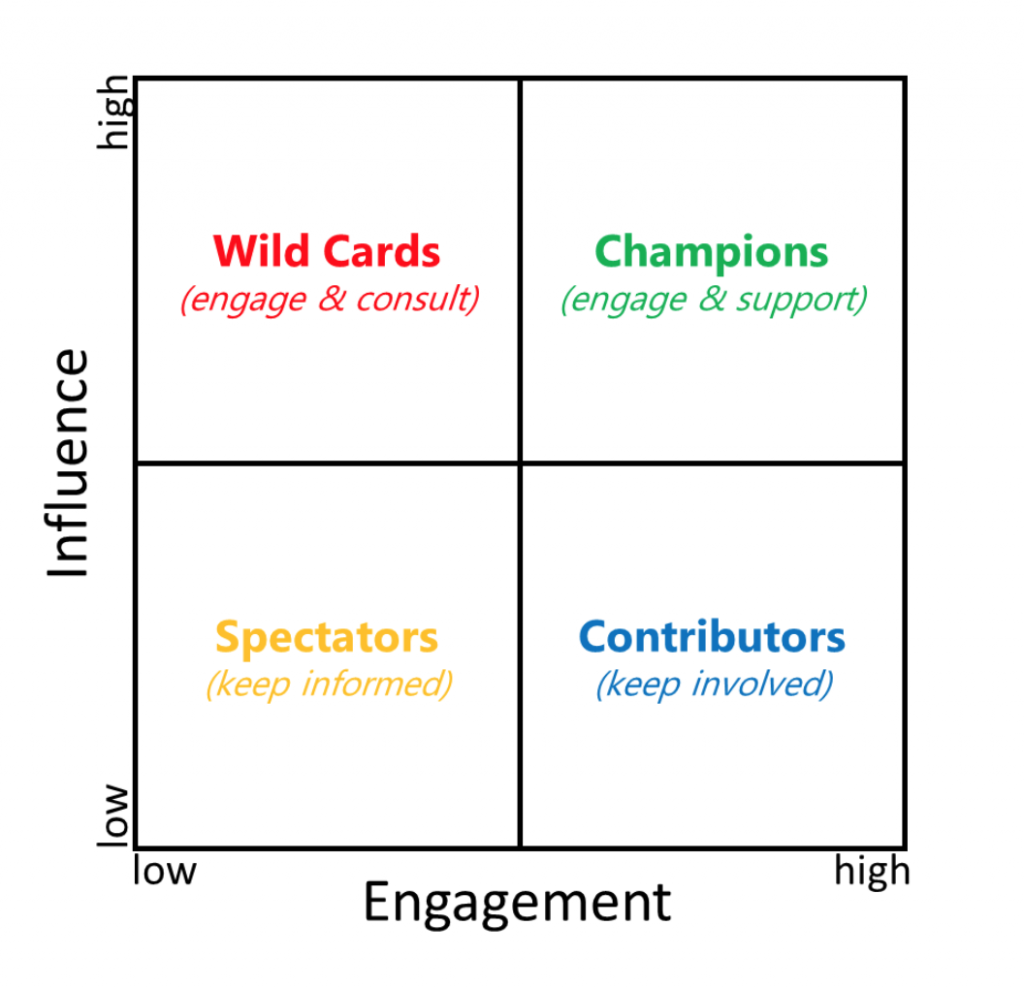Stakeholders are an important asset and are critical to the success of your Identity and Access Management program. Few IT projects have such far-reaching scope as Identity Management (IAM) engagements, touching stakeholders across all business domains. The breadth of IAM’s reach is also its downfall – with new requirements springing up like mushrooms after a spring shower. IAM projects usually start with a simple goal, such as automating user on-boarding and off-boarding, and they often devolve into an overwhelming number of requirements far afield of the original scope.
In essence, the project falls apart at first contact with stakeholders. Why does this happen?
Too often, key stakeholders are left out of the planning process, which leads to surprises. Once you have overlooked a key stakeholder, they are unlikely to forget you. These omissions are usually unintentional; however, they also occur by design.
One organization had challenges working with their HR team and decided that their IAM project would be implemented solely within the IT department. They were well into design when the IT team realized that the only way to get the user data they needed was to integrate with the HRIS system. By the time they reached out to the HR team, it was too late in the process. IT had alienated Human Resources, and the lack of trust between the two groups was an almost insurmountable challenge – a challenge that set the project back more than 6 months and forced a total re-design of the solution. In the end, the HR team was unwilling to make any process changes to accommodate the new solution. The result was an over-priced, under-performing system.
So how can we avoid stakeholder setback, or at least mitigate the risk?
We recommend beginning with a Stakeholder Identification & Analysis exercise while you are still in the planning phases. Stakeholders can fall into one of four categories, which will help you identify where you have support (Champions), who will help you implement (Contributors), those who need to be won over/are resistant (Wild Cards), and those who are neutral (Spectators).

One of the best ways to engage with your stakeholders is to begin with a short roadmap engagement with the express purpose of identifying needs and developing a high-level plan to address them. This approach casts a wide net to encourage participation from across the business to identify opportunities, set priorities, establish and socialize project goals, and foster a collaborative environment.
Engaging your stakeholders in the upfront planning can deliver significant benefits, including:
BENEFIT 1: IDENTIFY COMPELLING, STAKEHOLDER GENERATED GOALS
Initiatives that catalyze organizational transformation can build pathways that motivate sustained cooperation among stakeholders. Roadmaps allow everyone to see their project and where it fits into the overall plan (What’s in it for me?).
BENEFIT 2: CROSS-BUSINESS LEADERSHIP SYSTEMS
Coalitions that engage influencers across diverse stakeholders help to engage both your Champions and Wild Cards, which helps mitigate the risk that the project will have more detractors than supporters. Over the long term, the IAM program must develop cross-business leadership systems that mobilize important stakeholders, resolve tensions that exist between them, and connect their activities within a larger context of the program. One key thread in any IAM Roadmap is governance to set standards, manage change, and support progress.
BENEFIT 3: ESTABLISH A COLLABORATIVE FRAMEWORK
Stakeholders bring different interests, capabilities, and values to the IAM program. For this reason, working together can be difficult even when there is an agreement on the goals for the program. The power of roadmap engagements is that they provide a mechanism to inform and engage stakeholders, until the program can demonstrate its value to the organization.
In the end, every business unit in the organization stands to benefit from Identity Management in some way or another. The trick is to engage your stakeholder community early in the process to identify and prioritize opportunities from across the business. Once the opportunities are identified, documented, and organized in a cohesive plan, it reduces the chance of a new requirement popping up late in the game and derailing the process.
By combining a Stakeholder Analysis with a Roadmap Engagement, you can mitigate the risk of stakeholder resistance and better manage project scope.






